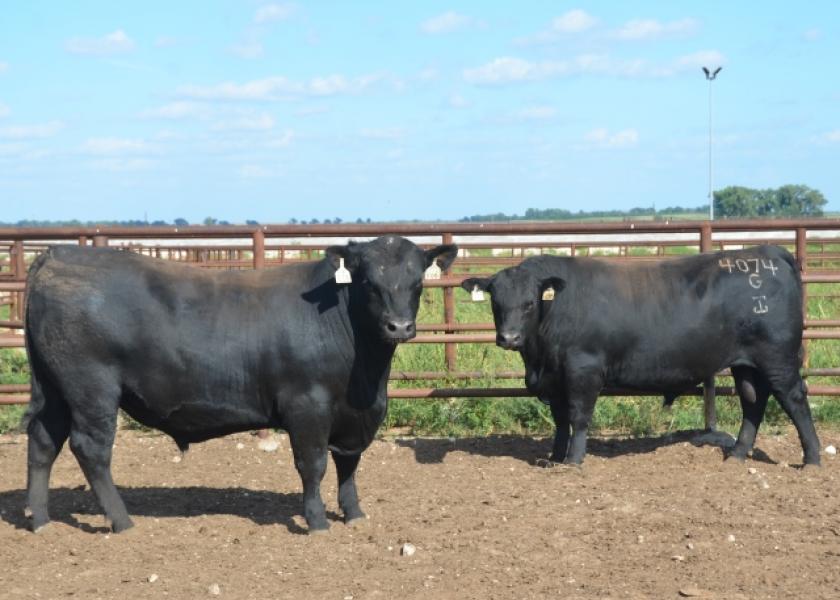Measuring the Value (or Expense) of a Bull Purchase

I recently received a call from an Oklahoma producer about which bulls to purchase for their commercial cow-calf operation. The operation needs two more Angus bulls this spring and has narrowed the selection list down to the following five bulls which were all available to purchase private treaty:

The bulls are all spring yearlings and will be approximately 15 months of age at turnout and accordingly should be expected to cover 15 cows this year. All the bulls have passed a Breeding Soundness Exam and sell with a registration paper and a Breeding Soundness Warranty. So the buying decision boils down to identifying the right bulls for this operation. The right bulls to buy are the ones most capable of adding value to the calf crop sired relative to their purchase price. In order to do so the bulls need to:
- Complement the females to which they will be mated
- Offer genetic values of economic relevance to the marketing endpoint of the calves they will sire.
This operation intends to use the bulls as terminal sires on spring calving cows, four to six years of age. After weaning, the calves will run on cool season grass until marketed as yearlings. In this operation the trait of primary economic importance is Yearling Weight (YW).
In order to calculate the profit potential of each bull, we will assume each bull will sire 135 calves over their lifetime of service, each will have the same salvage value and the value of a pound of YW sired will be $2.00.
Using the least expensive bull as our starting point:
Bull 5 serves as the baseline for least YW sired with a 108 YW EPD at expense of $5,500
Bull 1 is expected to sire 12 pounds more YW per calf, this multiplied by 135 calves results in an additional 1,620 pounds. 1,620 pounds of YW at a value of $2 equals $3,240. The purchase price of bull 1 is $4,500 more than bull 5. $3240 - $4,500 = $ -1,260. So, Bull 1 is a worse choice than bull 5 by $1,260.
Bull 2 is expected to sire 33 pounds more YW per calf, this multiplied by 135 calves results in an additional 4,455 pounds. 4,455 pounds of YW at a value of $2 equals $8,910. The purchase price of bull 2 is $2,500 more than bull 5. $8,910 - $2,500 = $6,410. So, Bull 2 is a superior choice than bull 5 by $6,410.
Bull 3 is expected to sire 27 pounds more YW per calf, this multiplied by 135 calves results in an additional 3,645 pounds. 3,645 pounds of YW at a value of $2 equals $7,290. The purchase price of bull 3 is $7,000 more than bull 5. $7,290 - $7,000 = $290. So, Bull 3 generates $290 more relative to his purchase price than bull 5.
Bull 4 is expected to sire 49 pounds more YW per calf, this multiplied by 135 calves results in an additional 6,615 pounds. 6,615 pounds of YW at a value of $2 equals $13,230. The purchase price of bull 2 is $2,000 more than bull 5. $13,230 - $2,000 = $11,230. So, Bull 4 is a vastly superior choice than bull 5 by $11,230.
Another way of looking at the buying decision. Over their lifetime of service:
Bull 5 will sire 135 calves at a cost of $5,500.
Bull 4 sire 135 calves while paying this cow-calf operation $5,730 for the opportunity.
Bull 3 will sire 135 calves at a cost of $5210
Bull 2 will sire 135 calves while paying this cow-calf operation $910 for the opportunity.
Bull 1 will sire 135 calves at a cost of $6760
Mark Johnson, OSU Extension beef cattle breeding specialist, explains why calving season is a great time to analyze your herd and make key decisions on SunUpTV from March 9, 2024. https://www.youtube.com/watch?v=o_uY8jFpeV8







